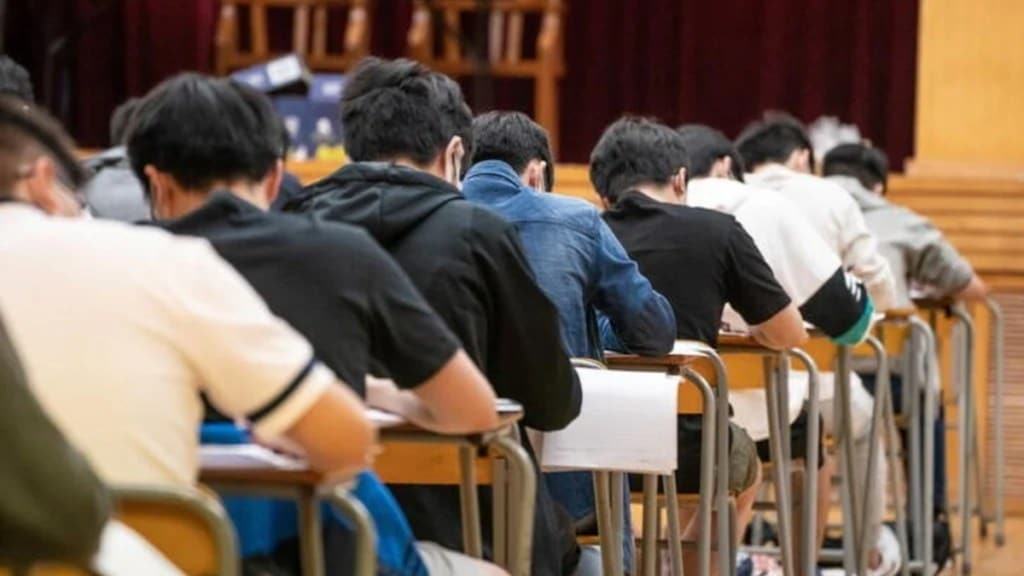Less than half of India’s graduates are employable, according to a recent research report. There are disparities between states and the government has tried to address the problem, but meeting industry needs remains a challenge for higher education, explains Anvitii Rai
What does India Graduate Skills Index 2025 say?
The India Graduate Skills Index 2025, published by online talent assessment firm Mercer Mettl, has shown a worrying trend: only 42.6% of graduates were employable in 2024, a decline from 44.3% in 2023. Technical proficiency is not dismal, however, with employability for technical roles showing a marginal growth from 41.3% to 42%, said the report which compiled data from 2,700 campuses in 31 states and Union Territories (UTs) and assessed over one million students. Artificial intelligence (AI) and machine learning roles showcased the highest employability at 46.1%; however, employability for non-technical roles saw a sharp dip (from 48.3% to 43.5%). Soft skills like creativity are one area where graduates are not proficient. Even for other soft skills like communication and critical thinking, the rate hovers around 50-55%. The index also brought regional disparities to light. While Delhi (53.4%), Himachal Pradesh, and Punjab (51.1% each) have the most employable graduates, only one southern state (Telangana) managed a spot in the top 10 regions with employable graduates.
Not keeping up with industry requirements
Quacquarelli Symonds’ (QS) World Future Skills Index 2025 placed India second for preparedness for jobs of the future including AI and green skills, but the country lagged behind several of its Asia-Pacific peers in other key aspects. Overall, India ranked 25th across indicators, which includes the alignment between skills and employer needs, academic readiness, and economic transformation. India was at the bottom of the top 30 in the “skills fit” and “future-oriented innovation” categories. These results indicate that while Indian employers are aware of what skills they require and what kind of talent needs recruiting, educational institutes are not keeping up with industry standards and adapting their curricula. According to the report, the shortfall “underscores a broader challenge for India’s higher education system, which is struggling to keep pace with evolving employer needs”.
How graduates fare worldwide
QS’ World Future Skills Index 2025 shows that around 30% of the countries are experiencing market growth that is faster than the pace of adaptation of new skills by their workforce. India lies within this grouping, along with other developed nations such as the US, China, Germany, South Korea, Japan, and Singapore. However, it only falls behind Japan in this grouping. Other developed and even developing nations such as the UK, United Arab Emirates, Malaysia, Mexico, etc. either lie within the “workforce readiness” cluster, where skills supply outpaces demand, or have a negligible gap between the two. Overall, the average skills fit score (a country’s education systems’ alignment with employer demands) is 58.8, showing there is still room for higher education sectors globally to improve their alignment between industry and academia.
Interpreting different reports
Reports have diverse data sets, methodologies, and scoring systems. For example, the Graduate Skills Index 2025 says that southern states, except for Telangana, do not feature in the top 10 in terms of graduate employability. They are behind northern states and UTs like Delhi, Punjab, and Himachal Pradesh. However, the Periodic Labour Force Survey data on unemployment rate for the age group of 15-29 years only favours Delhi (4.9% for October-December 2024), while Punjab and Himachal Pradesh’s percentages are close to and above the national average respectively. Also, the India Skills Report 2024 portrays a much more even distribution of employable graduates (22-25 years), with four southern as well as northern states featured in the top 10. Thus, findings from such reports should be corroborated with government data and not taken at face value.
How has govt tried to address the gap?
The government has sought to address the skills gap through the years. Its Skill India Mission was launched in 2015, which aimed to train more than 40 crore young people by 2022 in skills relevant to the market. However, as of 2023, only 1.4 crore youth were trained under its flagship scheme, Pradhan Mantri Kaushal Vikas Yojana. Other schemes under the Skill India Mission include the National Skill Development Mission, Indian Skill Development Service, and the National Apprenticeship Promotion Scheme (NAPS). However, results remain lukewarm at best and do not compare with the ambitious targets set initially. For example, NAPS (launched in 2016) targeted training 50 lakh apprentices by 2020, but only managed to train 20 lakh apprentices by 2022.
While government emphasis on futuristic skills with programmes such as the National AI Taskforce and specific aspects in the New Education Policy is laudable, skilling programmes are scattered, which can be gauged from the regional skills disparity, and a streamlined vision that can keep up with market demand and be implemented is yet to emerge.
Data points:
42.6% Indian graduates employable as of 2024, with 42% for technical roles and 43.5% for non-technical roles
0.6% of GDP invested in R&D by India, as opposed to 3.5% by the US and 2.9% by the UK
`8,800 cr outlay for the Skill India programme for FY26 from the period 2022-23 to 2025-26

